Delicias, Chihuahua 作者: 来源: 发布时间:2021-11-18
1.Population and Area
Pop: 223,993 (metro)
Area: 534.93 km2 (munip.)
Elev: 1,415 masl
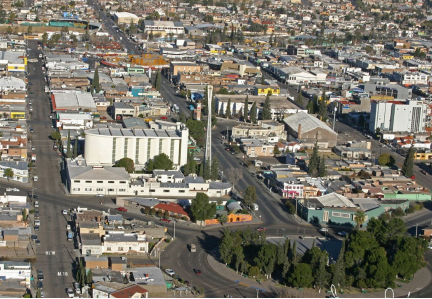
2. Natural geography
Nature and weather
Hydrography
Delicias lies in the rich Conchos River Valley and Meoqui to the north and Saucillo to the south and Rosales to the west. The Conchos River flows north on the west side of Delicias. About 30 miles south of Delicias, La Boquilla Reservoir holds back the Conchos River that begins in the highest parts of the heartland of the Sierra Madre Occidental. La Boquilla Reservoir, the largest dam in the state of Chihuahua, provides sustainable water supply to the valley along federal highway 45 including Delicias and the surrounding towns.
Orography
The western side of Delicias is dominated by the edge of the Sierra Madre Occidental mountain range that runs northwest to southeast. Southeast of the city the Sierra del Diablo mountain range runs southwest to northeast. Northeast of the city the dominant solonchaks and extreme arid conditions do not allow the land to be used for agriculture, but in the rest of the surrounding plains and mountains rich soils are found.
Flora and fauna
The vegetative period is 232 days. The flora includes xerophilous, herbaceous plants, shrubs of different sizes interspersed with some species of agaves, yuccas, cacti, legumes such as huisache, guamúchil, ax break, broom, grass.
Köppen Classification: Tropical and Subtropical Desert Climate
This climate is dominated in all months by the subtropical anticyclon, or subtropical high, with its descending air, elevated inversions, and clear skies. Such an atmospheric environment inhibits precipitation. Most of Earth's tropical, true desert climates occur between 15° and 30° latitude. The most extreme arid areas also are far removed from sources of moisture-bearing winds in the interiors of continents and are best developed on the western sides of continents, where the subtropical anticyclone shows its most intense development. An exception to the general tendency for aridity to be associated with subsidence is in the Horn of Africa region, where the dryness of Somalia is caused more by the orientation of the landmass in relation to the atmospheric circulation. Both the high- and low-sun monsoonal winds blow parallel to the coast, so that moisture-laden maritime air can penetrate over land only infrequently.
The Köppen Climate Classification subtype for this climate is "Bwh". (Tropical and Subtropical Desert Climate).
The average temperature for the year in Delicias is 66.2°F (19°C). The warmest month, on average, is June with an average temperature of 79.9°F (26.6°C). The coolest month on average is January, with an average temperature of 51.1°F (10.6°C).
The highest recorded temperature in Delicias is 105.8°F (41°C), which was recorded in June. The lowest recorded temperature in Delicias is 14.9°F (-9.5°C), which was recorded in January.
The average amount of precipitation for the year in Delicias is 13.2" (335.3 mm). The month with the most precipitation on average is September with 3.1" (78.7 mm) of precipitation. The month with the least precipitation on average is February with an average of 0.1" (2.5 mm). In terms of liquid precipitation, there are an average of 41.7 days of rain, with the most rain occurring in August with 8.6 days of rain, and the least rain occurring in March with 0.8 days of rain.
http://www.weatherbase.com/weather/weather-summary.php3?s=988014&cityname=Delicias%2C+Chihuahua%2C+Mexico&units=
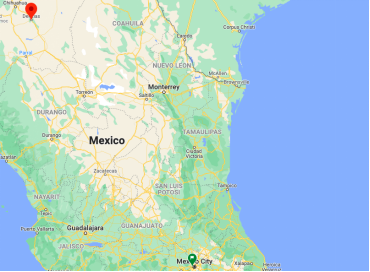
Getting there and around
Get there
By plane – The cheapest way to get from Mexico City to Delicias is to fly and bus which costs $1100 - $3500. It takes approximately 5h 14m to get from Mexico City to Delicias, including transfers via Chihuahua. The quickest flight from Mexico City Airport to Chihuahua Airport is the direct flight which takes 2h 8m.
By car – The distance between Mexico City and Delicias is 1168 km. The road distance is 1350.9 km, and takes approximately 20h 45m to get there.
By bus – The best way to get from Mexico City to Delicias without a car is to bus via Irapuato which costs $1800 - $2600. There are services departing from Izazaga and arriving at Delicias via Mexico City North and Chihuahua. The journey, including transfers, takes approximately 25h 40m.
https://www.rome2rio.com/s/Mexico-City/Delicias-Mexico
Rideshare – Check out Blabla Car's carpooling service for rideshare options between Mexico City and Salamanca. A great option if you don't have a driver's license or want to avoid public transport.
Car Rental – To explore Mexico’s provincial towns and cities—including its beach locations and the scenery and attractions near them— consider renting a car for your visit. Having your own car will give you more flexibility than using public transport options and, in some cases, offer you access to places which are otherwise difficult to visit without the use of a car.
COVID19 – International entry into Mexico from United States
Allowed for: All visitors arriving by air. Mexico land borders are closed to non-essential travel
Restricted for: There are no current restrictions.
Get around
Local Buses – Local buses and mini-buses (combis or micros) are available locally for a fraction of the cost of a taxi around town. You need to speak Spanish to be able to ask for directions or ask the driver to tell you where to get off.
Taxis – Taxis in most of Mexico’s towns and cities are not metered, so agree your price before you get in. Taxi travel is very affordable in Mexico, in comparison to the USA, Canada and Europe, and so provides a viable means of public transportation in Mexico. Your hotel can arrange taxis for you; some post their rates on a board in the lobby; taxi hotel rates are usually higher than cabs you hail off the street. If you speak Spanish, you will have a distinct advantage and be able to negotiate a price with the driver.
Uber is expanding rapidly across Mexico and now offers services in cities across the country, including: Mexico City, Toluca, Cuernavaca, Puebla, Querétaro, León, Aguascalientes, San Luis Potosí, Guadalajara, Monterrey, Hermosillo, Tijuana, Mexicali, and Mérida. Uber has been adding Mexican cities to its network every year, check for availability when you arrive at your destination in Mexico.
Cabify and Didi are also developing and currently operate in cities including Mexico City, Toluca, Monterrey, Puebla, Querétaro and Tijuana. Check for availability in the city you are visiting.
These services offer people with smartphones a way to book a cab through a mobile app for a pre-agreed price. Fares are comparable with Sitio type cabs, and sometimes trade at a premium to this when local demand increases.
https://www.mexperience.com/transport/taxi-travel-in-mexico/#51
3. ECONOMY
GDP: 17,213 M MXN (2010)
https://imco.org.mx/ciudades2010/ciudades/64_Delicias.html
4. Industry characteristics
Agriculture is so important to the municipality that it is known informally as the 'breadbasket' of the state, especially apiaries (the area produces a kind of honey known throughout northern Mexico). Delicias has a very diversified agriculture economy; the major crops include: pecans, chile, cotton, tomato, onion, and peanuts. Delicias is one of the most important dairy production areas in Mexico; the city hosts many modern dairy processors and dairy product manufactures. Delicias is home to Alpura, the second largest dairy in Mexico.
The economy is also dependent upon manufacturing, in the form of maquiladores. Delicias is also a major producer of wooden furniture with a national and international market. Delicias has major open air farm markets (Morelos Farm Market and Juarez Farm Market) and a shopping district located in North 3rd. Street (clothing, shoes, home goods, etc., known as "La Tercera". For decades the highschool and college students gathered in "La Tercera" as a social hangout. Delicias also has corporate chain franchised like Sam's, Soriana, Wal-Mart, Alsuper, Office Depot.
Key project: Delicias new hospital
This hospital will be one of the best equipped in facilities such as medical technology in the state, the construction of the hospital will be completed in two years, the investment will be 220 million pesos, with the participation of businessmen from El Paso, Texas; Guadalajara; Chihuahua; Delicias and of course the group of renowned doctors in the town, who have promoted this project for several years, so that dream can finally be realized.
The hospital will have five operating rooms for surgery, 58 rooms and 63 doctor's offices, all under the established rules, it will be located between Conaí boulevard and the San Pedro river, in the south of the city.
They have carried out market studies in the previous months to find out about different aspects that ensure the operation and success of this large project.
https://www.radiza.com.mx/radiza2018/noticia.individual.delicias.php?id=13540
5. Attractions
Chihuahuense Desert Museum
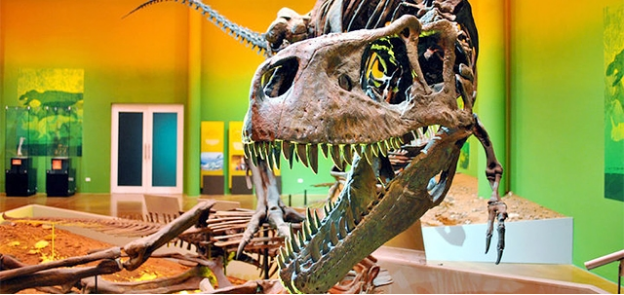
The Chihuahuense Desert Museum (MUDECH) is a new space whose theme specifically addresses this ecogeographic region of the state of Chihuahua. It was inaugurated on March 20, 2010 Through its four permanent exhibition rooms and a room for temporary exhibitions, the history of the Chihuahuan desert and the inhabitants of this region since the Ice Age are shown.
The theme addresses this ecogeographic region of the state of Chihuahua. The exhibitions of the room are: The Current Desert, the Ice Age to the Pleistocene Period, Cretaceous Period and Jurassic Period. MUDECH, as it is also known, is both a museum of natural history and a museum of paleontology.
https://www.mexicoescultura.com/recinto/67932/museo-del-desierto-chihuahuense.html
Sotol Factory
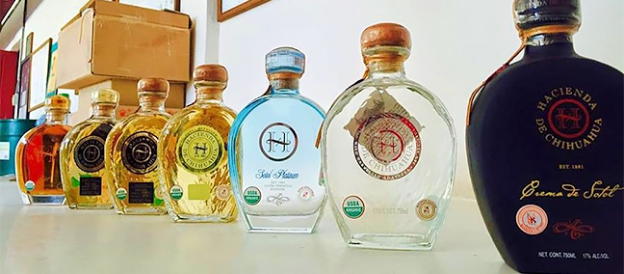
Spending an afternoon in Delicias, Chihuahua, is to discover the aromas and flavors that traditional grilled cheeses and burritos keep, but above all, it is to enter the world of a century-old drink: sotol.
The sotol (or cereque) is a desert plant, a wild agave, but it is certainly not like the magueys, rather it is a scrub close to the Nolinaceae family, that is, it has a more direct relationship with onions and garlic. Its appearance is like an explosion of thin, spiny bayonets.
Any time is good to visit the farm "Hacienda Chihuahua" and learn about the entire process of making sotol, this is not very different from the process used by other liquors such as tequila or mezcal. The recommendation is to taste the different labels cataloged by degrees of aging, in addition to trying the tasty sotol and walnut-based liqueur cream.
Sotol, a drink that has surprisingly been placed in the international market as a high quality liquor, its production is exported to countries such as the United States, Canada, Sweden, Spain, Russia, China, the Czech Republic, Chile and soon Australia.
https://aristeguinoticias.com/1309/lomasdestacado/el-norte-de-mexico-sabe-a-sotol
Paleontology Museum
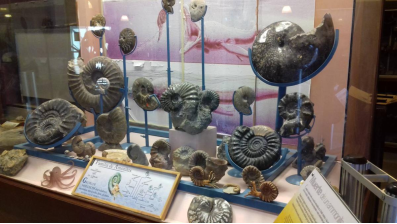
Located in the center of the city, in front of the Republic Square, it is one of the most important paleontological exhibits in the region. Having 7 dinosaurs under his belt, including the first hadrosaur skeleton assembled with original pieces in the country and which has been on display since the foundation of the museum.
In its enclosures you can find a collection of fossilized snails, fish, plants, dinosaur skeletons from the State of Chihuahua, a mammoth, a gray whale among other specimens, each piece accompanied by a brief and easy-to-understand explanation; plus a small souvenir shop.
He also created the first curatorship specialized in the restoration and rescue of paleontological pieces in the region, all with 100% Chihuahuan and national personnel.
http://www.museodepaleontologia.com
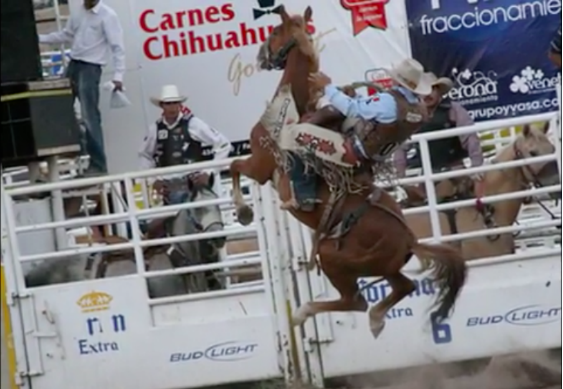
Cd. Delicias,chih.
https://youtu.be/My7bGiK9g3c
6. History
Early history
Prehistoric artifacts have been found in the Conchos River Valley that show evidence that indigenous people lived in the area for centuries before European settlers arrived in the area. Several indigenous mummies were found in the valley and are on display in the Museum of Paleontology in Delicias.
The area of present-day Delicias began to attract settlers in 1884 when the Central Mexican Railroad Company built a railroad station to fulfill the transportation demands for agricultural products from the Old Delicias Hacienda. In 1888, German settlers arrived in the area and built Hacienda Polvorosa; they began to prepare food items, brew beer, and produce steel instruments. However, the German settlers were forced to leave after continuous persecution by the Villistas. The Old Delicias Hacienda and Hacienda Polvorosa were the beginnings of the Delicias settlement. Later Hacienda Polvorosa was renamed El Hotel del Norte; this is now a popular museum in town. During the next few decades, the surrounding area began to grow and many small municipalities like Rosales, Meoqui, and Saucillo began to sprout. In 1932, the Chihuahua State Congress recognized this area as an important agricultural region, and named it Region 5. The city of Delicias was founded in 1933 after the Mexican Revolution and was officially declared a municipality on January 7, 1935.
In 1939 cotton in the Conchos River Valley helped build a foundation for a small industrial sector in Delicias. Cotton Gins and American Petroleum Refineries were built to provide services and products needed to fuel the agriculture sector. The Francisco I. Madero Dam was built, which increased crop yields and grew the population in the valley. During the 1940s, Cotton became such a dominant cash crop that by 1943 it replaced many vineyards in the surrounding area. Cotton continued to be the dominant crop of the Conchos River Valley until 1953, when the price of cotton plunged and forced many farmers in the area to diversify the agriculture economy.
The modern layout of Delicias was designed by Carlos G. Blake and was approved by the National Commission of Irrigation on September 30, 1960. The Chihuahua State Congress recognized Delicias as a city on October 29, 1960. That same year, a geological study on the Conchos River was conducted in Region 5 in attempts to build the largest dam in the state of Chihuahua. By 1960, Delicias was the fourth most populous city in the state of Chihuahua (after Juarez, Chihuahua and Cuauhtemoc City).
Delicias continued to grow in population and as a successful agricultural center. Delicias had an agricultural based economy until 1980 when important exporting maquiladoras moved to the city which helped increase the manufacturing sector. By 1990, Delicias was home to seven maquiladoras, making it one of the most important municipalities of the state of Chihuahua.
7.Contact Information.

City Mayor: Eliseo Compeán Fernández
Phone number: +52 (639) 470 8600, ext.: 71010, (639) 467 5334
E-mail: presidencia@delicias.gob.mx
Facebook: https://www.facebook.com/eliseocompeanfdz
Website: https://municipiodelicias.com
Govt. Office Address: Círculo del Reloj Público Ote. 1, Colonia Centro, C.P. 33000, Delicias, Chih.
